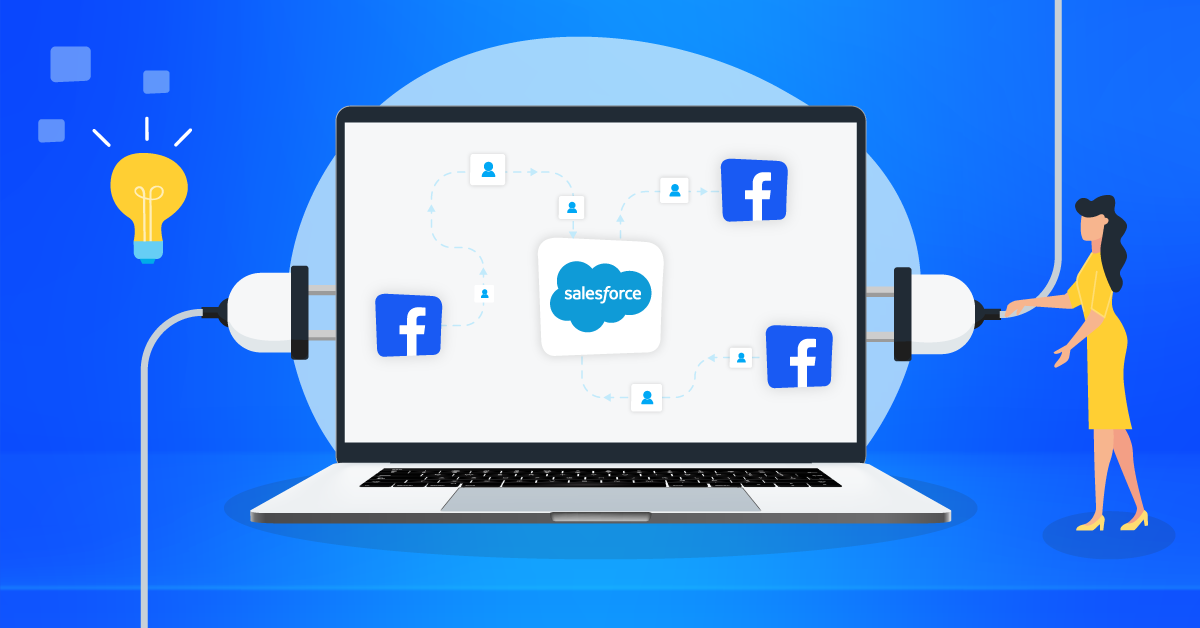
The high competition level makes advertising on Facebook easier said than done. So the question is, how can you get a good return on ad spend (ROAS) on Facebook ads?
It all comes down to understanding how Facebook ROAS works and how you can maximize your ads’ performance.
In this article, we’ll discuss how to increase ROAS on Facebook ads and the necessary tools and integrations, such as:
What is Facebook ads ROAS?
ROAS is an acronym for Return on Ad Spend, which is a marketing metric relevant to profitability. It calculates the amount of revenue an advertiser earns for every dollar expended on marketing efforts.
Statistics show that 72.5% of Facebook’s monthly active users can be monetized through advertising. And considering the platform’s massive user base, that’s a considerable crowd to capitalize on.
Keep in mind that this number can fluctuate based on a series of factors, like the niche, ad placement, seasonal trends, and more.
Explaining Facebook ads ROAS benchmarks
How much revenue do you earn for every dollar spent on Facebook ads? That’s your ROAS. To give you a more precise idea of what a “good” ROAS looks like, however, we have Facebook ads ROAS benchmarks.
Benchmarks are set for different industries based on real data. In July 2024, the average ROAS across industries for Facebook ads was 2.98. This means that companies made almost $3 for every $1 spent (on average).
Regardless, different industries function differently. Some industries get better returns than others. For example:
- Automotive parts had the highest ROAS at 9.60, meaning these businesses made $9.60 for every $1 spent.
- Hotels also did very well with a ROAS of 7.04.
- Industries like healthcare sit on the lower end. It had a ROAS of just 1.49, which means for every $1 they spent, they only made $1.49.
Why does ROAS differ by industry?
Competition, target audience, and product pricing among many other factors cause these differences. As a rule of thumb, industries with expensive products, like car parts, can see higher ROAS because even one sale generates significant revenue.
When looking at benchmarks for your industry, it’s important to know what’s typical. Having an idea allows you to set realistic goals for your ads and work to improve your ROAS over time.
How to calculate Facebook ads ROAS?
Here’s the general formula: ROAS = Revenue Generated from Ads divided by Total Ad Spend.
For example, if you spend $500 on ads and generate $2,000 in revenue, your ROAS is:
ROAS=2000 divided by 500 equals 4.
Your ROAS is 4, which means you earned $4 for every $1 spent on ads.

Calculating ROAS for Facebook ads
Measuring the ROAS for Facebook ads shows you how much revenue is generated from each dollar you’ve invested. The idea is to compare the total sales driven by the advertisements to the total ad spend on Facebook. This shows how effective and profitable your Facebook advertising campaigns actually are.
Follow these simple steps to calculate your Facebook ads’ ROAS:
Step 1: Install a Meta Pixel & set up Events:
First, install Meta Pixel on your website.
Then, set up relevant conversion events based on your business type (ecommerce or service).

Here’s how to install a Meta Pixel.
Step 2: Create a Custom Reporting column in Ads Manager:
Navigate to the Ads Manager dashboard.
Click on Columns “Performance”. Then, select Customize Columns.

Next, customize your reporting column by adding key metrics like purchases, conversion value, and ROAS.

Remember, you’ll only need the core metrics. You may remove unnecessary ones for clarity.
Step 3: Analyze ROAS metrics for purchases
First, find and select the ‘Purchase ROAS’ metrics in your custom reporting column.

Then, set your reporting window for a true performance picture.

Here, you can calculate total ROAS by adding figures from the default and 28-day view.
Step 4: Measuring ROAS for lead generation
Once you have installed the Pixel, you can also set up standard events for lead conversion. This allows you to create a reporting column with lead action for tracking lead generation.
What’s a good ROAS for Facebook ads?
Before discussing what’s good or bad, let’s take a look at different ROAS values and what they mean:
Break-even ROAS
To break even, you can set your ROAS goal at 1.00. If your ROAS is 1, it means your revenue equals your ad spend, i.e., it equals a 100% return on ad spend.
Example: If you spend USD 100, aim for around USD 100 in value from purchases.
Profitable ROAS
If you set the ROAS goal at USD 1.15, you’ll get a 15% return. In other words, you’ll have around USD 115 in value from a USD 100 ad spend.
When the ROAS values exceed 1, it means the profitability ratio of your campaigns, with a higher value being more favorable. An average Facebook ad ROAS is 4:1 or above. A 4:1 ROAS means that for every $1 spent on ads, your business gains $4 in revenue.

Negative ROAS
If your ROAS goes negative, you probably are spending more on ads than you’re making in revenue. This is not a good sign, and you’re losing money on the ads.
Keep in mind that there’s no universal ROAS standard; each business has distinct models and costs. That’s why you need to evaluate ROAS with an eye on profitability and customer retention.
Factors affecting your Facebook ads ROAS
Before getting started, make sure your target ROAS is aligned with business objectives. This goes beyond just your business. To create a balanced approach, you need to analyze your niche market, what works best in terms of advertising, and how to adjust your strategies accordingly.
This research helps you understand industry benchmarks for setting realistic expectations. There are three major factors affecting your business’s ROAS:
1. Industry
Each industry has unique demographics and competition levels. Comparing your ROAS with similar businesses in your industry allows you to “benchmark”, which is basically the comparison of your performance to that of your competitors.
2. Category maturity
How familiar is your product or service in the market? The category maturity model shows how well similar solutions have done in markets like yours. It’s all about what works, how people use it, and what they like about it.
This data can provide a forecast of your potential growth. If you find out that your category is on the lesser-known side, you can educate your audience to show you can solve their problem and consequently increase your ROAS.
3. Advertising Channel
The advertising channel you choose should be aligned with your audience’s preferences. Can you reach your audience on Facebook? If yes, evaluate the impact of advertising costs on return on this platform.
What is Facebook ads minimum ROAS?
Minimum ROAS (Return on Ad Spend) is a Facebook bid strategy. It’s a way for you to make sure your ads maintain a specific level of return for every dollar spent.
Instead of simply maximizing the number of conversions, the minimum ROAS strategy helps you make sure that your Facebook ads are bringing in enough revenue to meet your profitability goals.
How minimum ROAS works
Setting a minimum ROAS allows Meta to prioritize maintaining a certain return over getting more conversions. For example, if you set a minimum ROAS of 4.0, Facebook will aim to get at least $4 in revenue for every $1 you spend on ads.
This is useful when you’re more concerned with profitability than the sheer number of conversions. This configuration prompts the platform’s algorithm to adjust its bidding in the ad auction to meet your set return target. If Meta can’t reach your set minimum ROAS, however, your ad spend may decrease. As a result, you might get fewer conversions.
When to use minimum ROAS
You should consider using this strategy when:
- Optimizing for value, not just volume. For example, if your goal is to generate high-value conversions (like fewer expensive sales), Minimum ROAS can help.
- Have a specific profitability goal, and you’re struggling to meet it without controlling ROAS.
- Want to maintain better control over how Facebook spends your budget. This makes sure your ad spend is going towards profitable conversions.
Keep in mind that setting a minimum ROAS doesn’t guarantee Facebook will hit that target, especially if it’s too high.
Also, you should always start with a reasonable minimum ROAS. If it’s set too high, you might not get enough conversions or spend your full budget.
When all is set, it can take Facebook around 3 days to optimize your ads fully. So don’t make hasty modifications if results are slow at first.
How to increase ROAS Facebook ads
Here are some strategies that can lead to a more profitable Facebook advertising campaign.
1. Experimenting with your ads
Testing different aspects of your ad on a regular basis is the key to creating profitable Facebook campaigns. You can experiment with a variety of aspects. For instance, work on your creatives, levy performance breakdowns, revise your audience targeting, or try different campaign objectives.
2. Testing diverse bid strategies
When it comes to budget management, start with your ad cost. Experimenting with different bidding strategies sheds light on the Cost Cap (or the maximum results within a fixed budget) of your campaign.
Once you know the average cost per acquisition of your ads, explore “lowest cost” and “value-based” bidding to improve your performance.
3. Optimized use of lead generation forms
Generating leads on its own doesn’t bring any profit. You’ll need to organize, nurture, and push these leads down your conversion funnel. The good news is that there are tools to help you with that.
For instance, you can use lead ads’ instant forms, which can be completed directly on the platform. This not only boosts conversions but also cuts down on the time and costs of creating unique landing pages for each ad.
Meta also suggests using their official Meta Buisiness Partner services for better data management. Tools like LeadsBridge enable you to connect your lead ads with your favorite marketing platforms. This connection helps you send automated lead nurturing emails, create laser-sharp segmentation, and follow up with them as they come in. All of this can eventually lead to higher conversion rates.
4. Qualifying your audiences
Another way to optimize your earnings is by focusing on your audiences. Leveraging first-party data and lookalike audiences are two features to consider for better targeting. However, you should avoid over-segmentation in order to provide Facebook with sufficient data.
With LeadsBridge, you can also integrate your CRM or autoresponder with Facebook. This data bridge uploads your customer list directly to Facebook in order to automatically generate custom audiences.
5. Using different customer journeys
Similar to ad strategies, customer journeys are different for each product and brand. This needs more than just product page optimization. One way to get more info is by running surveys.
Similarly, you can consider higher-funnel entry points, like video views, and see what is bringing in the most engagement (and invest more in that).
6. Reducing friction with better data management
Streamlining your data management and experimenting with higher funnel leads are two important aspects of successful Facebook advertising. In addition to new lead information, this data includes the conversions that take place online and offline.
Analyzing offline conversions allows you to identify your most effective marketing channels. To take this up a notch, connect your online and offline efforts by integrating your database (like a CRM) to your Meta Conversions API.
Final thoughts
Knowing how to increase ROAS on Facebook ads is essential. However, achieving an ideal ROAS can be a moving target. For example, factors like seasonal trends, such as Black Friday and the Christmas season, can significantly affect the average ROAS for Facebook ads. But again, these occasions also mean an increase in spending and higher ROAS consequently.
Beyond crafting a robust strategy, using the right tools can significantly improve your advertising efforts. As a result, this enables you to optimize your campaigns for greater profitability.
Discover all the possible Facebook integrations with LeadsBridge.























